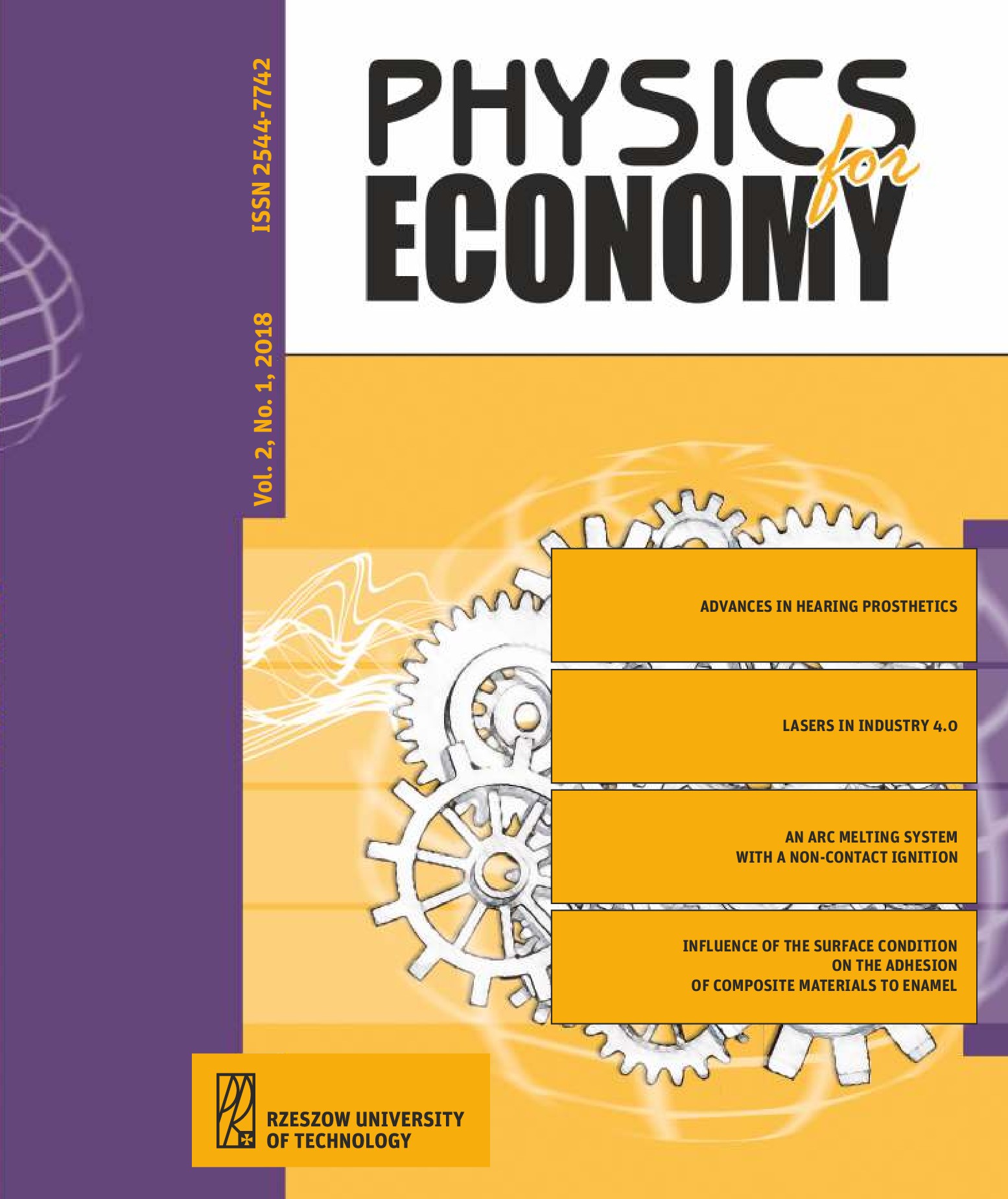Abstract
Arc melting is a widely used method in materials physics, in general in materials science, as well as in metallurgy, to synthesize new materials starting from high purity constituents. As the high temperature of the technological process is easily attainable, typically arc melting is used to synthesize new materials from metals, and even oxides, with high melting points. In the melting methods usually used the arc is ignited by briefly touching the electrode to the crucible and quickly withdrawing it to a short distance. The contact ignition, however, can contaminate the tip of the tungsten electrode and consequently can reduce the purity of the obtained ingot as compared to the initial components. In order to avoid the contact procedure and thus the purity reduction, an arc non-contact ignition system for melting is proposed in this paper. The arc melting system, the furnace design, the ready for use arc furnace, and the melting procedure, are presented and discussed. Additionally, an arc furnace with a suction attachment to prepare ingots as rods is presented. The clean crystal structures, known from literature, were determined for a number of the compounds synthesized by the non-contact arc method. This quality of crystal structures results mainly from the maintained materials purity during synthesis.
References
Herget C., Domazer H.G., Methods for the production of rare earth – 3d metal alloys with particular emphasis on the cobalt alloys, Goldschmidt Informiert, 1975, Vol. 4/75, No. 35, pp. 3-33.
Bradshaw A.R., Fort D., A laboratory-scale arc furnace for melting volatile metals under elevated inert gas pressures, Rev. Sci. Instruments, 1992, Vol. 63, No. 11, pp. 5459-5463.
Onak M., Pszczoła J., Otrzymywanie związków międzymetalicznych ziemia rzadka – metal przejściowy metodą syntezy w łuku elektrycznym, Materiały XXVIII Szkoły Inżynierii Materiałowej, Kraków-Szczawnica 3-6 X 2000, Wyd. WMiIM AGH (2000)211 (in Polish).
Spawalnicze źródło prądu TIGER 250 PROFI, Instrukcja instalacji i obsługi, BESTER S.A., Bielawa (in Polish).
Tarflen, politetrafluoroetylen, (broszura) Zakłady Azotowe w Tarnowie-Mościcach (in Polish).
Stoch P., Onak M., Pańta A., Pszczoła J., Suwalski J., Otrzymywanie i struktura krystaliczna związków międzymetalicznych Dy(Fe-Co-Al)2, Monografie IEA, Instytut Energii Atomowej, Otwock-Świerk 2002, Vol. 5 (in Polish).
Kurbiel A., Elektrotermiczne urządzenia łukowe, WNT, Warszawa 1988 (in Polish).
Hauser. J., Podstawy elektrotermicznego przetwarzania energii, Zakł. Wyd. K. Domke, Poznań 1996 (in Polish).
Dobaj E., Maszyny i urządzenia spawalnicze, WNT, Warszawa 1988 (in Polish).
Minnick W.H., Prosser M.A., Gas Tungsten Arc Welding Handbook, Sixth Edition, The Goodheart-Willcox Company, Inc.,Tinley Park, IL 2016.
Bednarski M., Chmist J., Pszczoła J., Crystal structure, electrical resistivity and Curie temperature of Ho(Mn1-xFex)2 and Ho(Co1-xNix)2 intermetallics, Journal of Magnetism and Magnetic Materials, 2013, Vol. 334, pp. 59-65.
Onak M., Guzdek P., Stoch P., Chmist J., Bednarski M., Pańta A., Pszczoła J., Crystal structure and electrical resistivity studies of Gd(Fe1-xCox)2 intermetallics, Journal of Alloys and Compounds, 2007, Vol. 433, pp. 53-58.
Onak M., Guzdek P., Pszczoła J., Stoch P., Jabłońska A., Suwalski J., A. Pańta, Crystal structure and Mössbauer effect studies of Gd(Mn1-xFex)2 and Gd(Fe1-xCox)2 intermetallics, Nukleonika, 2007, Vol. 52, supp.l.
www.lincolnelectric.com/en-gb/education-center/welding-safety; 02.06.2018.


